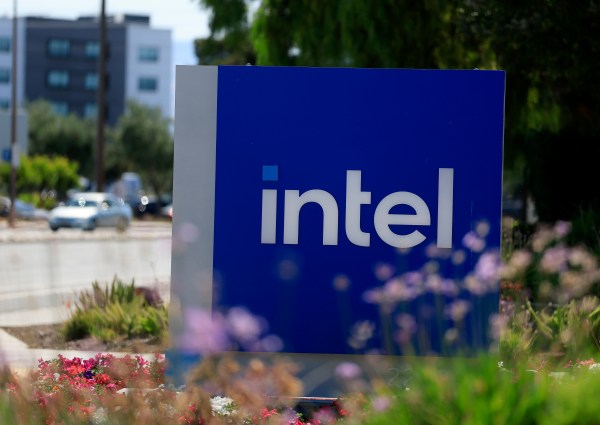In 1973, historian Russell Weigley described the American way of war as a “strategy of annihilation.” Such a strategy aims to identify a single, clear objective, a decisive battle or series of battles where victory will force the enemy to surrender. Gens. Grant and Sherman demonstrated this approach during the Civil War, and America’s victories in World War II established a deep reservoir of conviction in both the military and the public to support the strategy of annihilation.
Many Americans today—in the aftermath of the war on terror and as a result of unforeseen blowback—are less taken with strategies of annihilation as the way to wage war than they were half a century ago. Unfortunately, lessons learned painfully on the battlefield have not kept strategies of annihilation from seeping into American politics and culture. Over and again we see binary framings that allow for no outcome other than a decisive victory by one side or the other.
The debate about the crisis in higher education provides the latest example, where the pursuit of an illusory ideological victory undermines urgently needed efforts to redesign universities and colleges as centers of learning.
This crisis has been building for a long time. Concerns about the cost of higher education have grown steadily more pronounced over the past several decades, with the proportion of Americans who feel college is affordable dropping by almost half, from 39 percent to 22 percent between 1985 and 2011. In 2017, Republicans’ views toward higher education shifted noticeably, with a majority saying for the first time that they felt colleges and universities had a negative influence on society. While Republicans were more likely to cite concerns about the politicization of campus culture—reflected in the sharp decline in the number of faculty who identify as conservative, for example—versus affordability, the net effect is that by 2023, confidence in higher education had collapsed.
Hamas’ terror attacks against Israel on October 7, and in particular the failure of many university leaders to adequately respond to the surge in antisemitism that followed, brought an acute degree of urgency to the situation. For many Americans, including those who had been less engaged on the issue, it appeared as though an illiberal campus culture that seemed to justify, and in some cases celebrate, the brutal killing of innocents was on full display.
While rightly critiquing rigid orthodoxies on many campuses and the indefensible nature of some of the views expressed there following October 7, too many calls for reforming higher education have adopted a strategy of annihilation in how they frame the situation. This was evident, for example, in investor Bill Ackman’s argument for how to fix Harvard, which rests primarily on eliminating DEI—described by Ackman as “a powerful movement that has not only pervaded Harvard but the educational system at large”—as the core objective.
Such strategies were gaining traction before October 7. They featured prominently with Florida’s Stop W.O.K.E Act, for example, which the Foundation for Individual Rights and Expression argued against out of concern that it would effectively “trade one orthodoxy for another.” But it is now increasingly common to see calls for wholesale changes in personnel, based upon their perceived ideology, as a precondition for improving higher education.
The problem with this framing is that strategies of annihilation will almost certainly fail to improve our universities. To be successful, such strategies require there to be clear-cut sides, which do not exist in higher education despite attempts to say otherwise. Most Americans primarily think about college in instrumental rather than ideological terms. Most people do not want universities to be “woke” or “anti-woke”—they just want them to carry out a set of functions, especially to help students secure work and embark on successful careers.
Furthermore, while research shows a strong liberal bias among students, professors, and administrators, views are far from monolithic. Even on hot-button issues, most people’s views are more fluid and uncertain than rigidly fixed. But strategies of annihilation make it easy to see adversaries everywhere. This causes reformers to overreach, alienate potential partners, and drive further tumult and extremity on campuses.
Finally, strategies of annihilation in higher education are self-defeating. The worldview of a student or faculty member should not be the top concern in a free society. Individuals can hold a wide range of views, even ones the broader society disagrees with. As the Cato Institute’s Andrew Gillen points out, attempting to eliminate any ideological movement would undermine the very goal of promoting a more open and robust learning environment.
In short, there can be no decisive political battle won in our campus culture wars. But there is clearly a fraught environment on many campuses. What strategy should reformers pursue?
One solution starts by changing the analogy from war to organizational design. The path forward for higher education does not involve defeating enemies, but rather reinvigorating a focus on what we might call a university’s core capabilities, to borrow a term from management scholars. With this framing, the salient question is not “what do people believe” but rather, “what is the job to be done.” A core capabilities framework prioritizes the services, experiences, and products that colleges need to deliver to their students, parents, faculty, and other relevant audiences. This emphasis shifts the conversation from an individual’s psychology and political views to how universities are governed and managed.
An organizational design approach offers a more promising path to invigorating higher education, in part because it better diagnoses the situation. Although it’s common in an era of hyper-polarization to view different settings—the business world, campuses, churches—as simply containers for a massive culture war, each setting is in fact distinct. With higher education, a large part of today’s crisis has to do with what we might call “capability creep”, where institutions lose sight of their most important capabilities, especially those related to delivering learning that is relevant, accessible, and affordable, and instead emphasize other capabilities, such as those related to advocacy.
Consider the growth in centers and institutes across universities. The University of Pennsylvania’s Environmental Innovations Initiative, for example, lists 34 different centers or institutes connected to addressing environmental challenges. This reflects a common situation in higher education, where an array of centers—housed within but existing slightly independent from the institution itself—focus on addressing a contemporary policy or social issue. Any one such center might not exert much influence on the institution, but as they grow in stature or increase in number, they can change the institution’s strategic calculus, causing it to emphasize advocacy over learning.
A strategy of annihilation seeks to cut such efforts off because of their perceived politicized nature. Not only would such a wide-sweeping change likely cause a backlash, it could also undermine work that many on campus might view as a core capability—for example, partnering with industry for mutually beneficial research.
A strategy of organizational design would instead start with a series of questions to identify how such centers or institutions serve or subtract from core capabilities. These questions include: What core capabilities are the centers explicitly tied to? Who makes decisions about the centers’ activities? How transparent is the decision-making process and how reflective of the university’s stakeholders is the decision-making team? This approach enables higher education leaders to identify and support the structures and strategies that best deliver on the most important capabilities and to reform or eliminate those that do not.
A similar example could be applied to endowments and investments. Over the past decade, approximately 3 percent of U.S. higher education institutions, representing 39 percent of endowment assets, have divested from fossil fuel companies. When viewed as a problem of ideology, it sets the stage not just for rollbacks, but counter-divestment efforts. Such efforts, while holding opposite goals, are similar in that they create governing structures that permit the use of the endowment for ideological goals.
An organizational design approach would instead assess the situation through the lens of core capabilities and decision-making processes. Rather than imposing any ideological litmus test, higher education leaders would consider what jobs the university needs the endowment to do, the governance structures best suited to execute those jobs, and the impact different options would have on the broader institution. This is the kind of approach that led then-Harvard President Drew Faust to caution against fossil fuel divestment in 2013: “Conceiving of the endowment not as an economic resource, but as a tool to inject the University into the political process or as a lever to exert economic pressure for social purposes, can entail serious risks to the independence of the academic enterprise.”
This framing applies to conflicts over free speech and expression on campus as well. Adopting clear principles in support of free speech, pluralism, and robust debate, such as those associated with the Chicago Statement, could be a sensible step for many institutions. But for any set of principles to be effective, they have to be embedded into decision-making systems that apply holistically across the institution. It’s not just a matter of resolving what kinds of speakers the institution allows, but also addressing who gets to make these decisions, how the institution resolves conflicting demands, and how it applies such principles more broadly across campus activities.
The need to consider university activities holistically underscores another virtue of strategies of organizational design, namely their simplicity. At their most basic level, such strategies involve a straightforward set of steps: identify core capabilities; shape decision-making and management structures to best execute those capabilities; ensure transparency and accountability; and assess, iterate, and improve. At a moment when trust in higher education is so low and tensions so high, reformers must fight efforts to add complexity and stick to a process that can be clearly communicated to all.
Being simple does not mean any of this will be easy, however. There are always trade-offs and conflicts to resolve. Different groups demand different capabilities from higher education. Faculty and industry partners might hold contrasting expectations about how much an institution prioritizes preparing students for careers versus preparing them for the responsibilities of citizenship, for example. Considering the diverse array of interests universities have to account for, from students and parents to faculty and donors, the process of organizing around core capabilities will never be neat and tidy. And it will play out differently for each institution based on its unique context.
But while acknowledging these risk factors, a strategy of organizational design provides any institution with a clear pathway forward that is more actionable and less freighted with ideology than strategies of annihilation. Strategies of annihilation pushed for today might generate headlines, but they will fail to transform higher education.






Please note that we at The Dispatch hold ourselves, our work, and our commenters to a higher standard than other places on the internet. We welcome comments that foster genuine debate or discussion—including comments critical of us or our work—but responses that include ad hominem attacks on fellow Dispatch members or are intended to stoke fear and anger may be moderated.
With your membership, you only have the ability to comment on The Morning Dispatch articles. Consider upgrading to join the conversation everywhere.